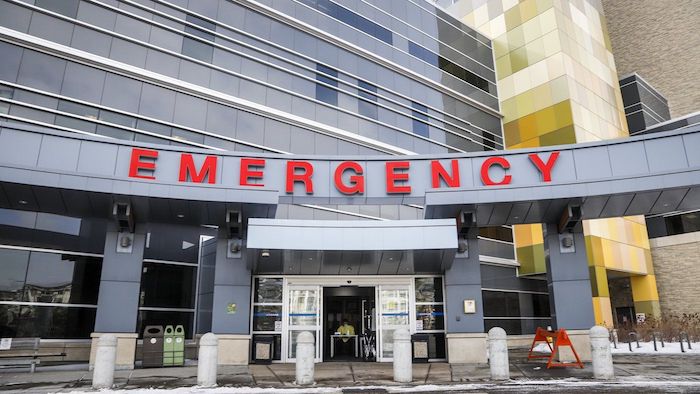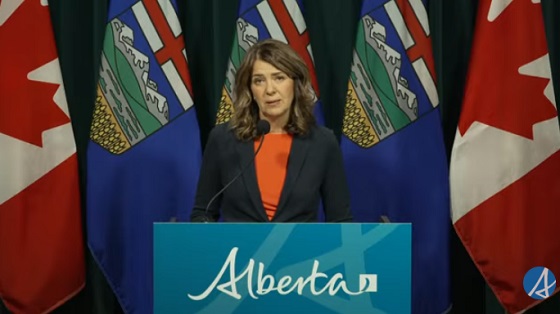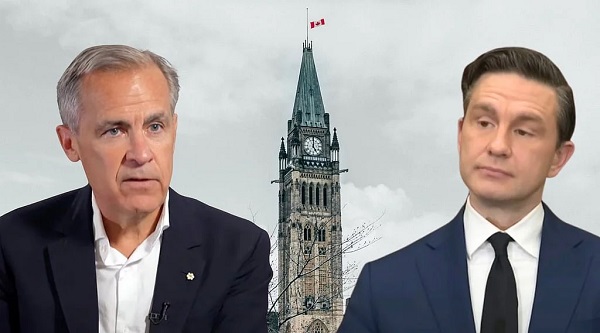Alberta
Wait times down. Better EMS response times. Province releases results of 90 day Health Care Action Plan

90-day HCAP update: Health care wait times dropping
Albertans are spending less time waiting for the medical care they need since the Health Care Action Plan (HCAP) was launched.
Alberta has the best front-line health care workers in the world, and Alberta’s government will work to have the right supports in place to ensure Albertans get the care they need when and where they need it. When Alberta’s HCAP was launched on Nov. 17, Alberta’s government identified four different areas on which it would work with Alberta Health Services to improve. After 90 days, Albertans are seeing improvements in all four areas.
“We are delivering on our promise to reduce wait times, add more front-line staff and keep Albertans updated on the progress we’re making. There is no one silver bullet to fixing our health care system, and change will take time. But positive change is happening, and Albertans are receiving better access to the level of care they need when and where they need it. We appointed Dr. John Cowell as official administrator to speed up improvements and make sure Albertans are getting high quality of care sooner and we are seeing some good, early results.”
Improving EMS response time
In an emergency, every minute counts and over the past three months, ambulances have been responding faster to emergency calls. Improved ambulance times means that Albertans are receiving the urgent care they need from highly skilled paramedics more quickly.
From November to the end of January, EMS response times for most urgent calls improved across the province in metro, urban, rural and remote areas. The decrease in EMS wait times across the province can be broken down to:
- 17 minutes in metro and urban areas, down from 21.8 minutes
- 19.2 minutes in communities with more than 3,000 residents, down from 21.5 minutes
- 34.9 minutes in rural communities with fewer than 3,000 residents, down from 36 minutes
- 57.5 minutes in remote communities, down from 63.9 minutes
In addition to improved EMS wait times, more ambulances have been available, meaning that red alerts, which indicate a lack of ambulance availability at a point in time, were substantially reduced in Edmonton and Calgary:
- Edmonton has seen a 92 per cent reduction in the number of alerts issued in January 2023 compared with January 2022.
- Calgary has seen a 60 per cent reduction over the same period.
The initiative to triage 911 calls to the most appropriate level of care has also played a role in ensuring paramedics are able to answer the most urgent calls. Since the program was launched in January, 1,600 callers with non-urgent conditions were transferred from 911 to Health Link registered nurses. Alberta’s government is pleased to see progress on its aim to reduce EMS wait times and will continue working to further decrease the amount of time an Albertan waits for an ambulance to arrive.
“The good news is wait times are trending in the right direction and Albertans are getting the care they need more quickly. More doctors, nurses and paramedics are available to help Albertans, and more help is on the way as Alberta continues to add front-line workers for ambulances, ERs and across the system.”
Reducing surgery wait times
Alberta’s government continues its work to reduce surgical wait times for Albertans. Part of a strong health care system is ensuring that Alberta patients are receiving their surgeries within clinically recommended times. Since November 2022, the number of patients waiting longer than the clinically recommended time has decreased by 9.4 per cent.
Alberta’s chartered surgical facilities are helping to reduce wait times and ensure Albertans are receiving the surgeries they need to improve their health and their quality of life. Nearly 7,000 more publicly funded surgeries were completed at chartered surgical facilities in January compared with November, a number that includes orthopedic and eye surgeries. As this work continues, AHS is focused on ensuring that those patients who have waited the longest for surgery are prioritized.
“I would like to thank our incredible front-line workers as well as our AHS leaders, who have worked extremely hard to identify and implement improvements to our health care system, with focus on our priority areas. We have emerged from an extremely challenging time, and I am optimistic that we will continue to see improvements that will benefit all Albertans whenever they need our care and support.”
Decreasing emergency room wait times and improving access to care
Alberta’s government is also encouraged to see that in January, more Albertans received care sooner when they visited emergency departments. Progress in lowering emergency department wait times has been seen in the two measures:
- Wait time to see a doctor in an emergency department decreased by almost 10 per cent provincially since November.
- Time spent in an emergency department for admitted patients has been reduced by about five per cent.
There is still work to be done to ensure Albertans have lower wait times in emergency rooms across the province, and Alberta’s government will continue to make policy and funding decisions to see those improvements. In January, the number of assessed patients waiting in the province’s top 14 hospitals for a continuing care space was 179, lower than the 218 patients in the 2018-2019 fiscal year, and also lower than the 253 patients waiting in November 2022. A number of changes have helped to spur progress on emergency department wait times from November to the end of January:
- AHS opened 255 new acute care beds (non-intensive care unit) across the province.
- More beds in continuing care facilities have been opened – freeing more hospital beds for urgent care: 55 new long-term care beds, 292 new designated supportive living beds and 38 new community addiction and mental health beds.
- Additionally, 36 new transition beds for people discharged from ERs in Edmonton who are experiencing homelessness will be opened this year.
Empowering health care workers to deliver health care
Alberta continues to hire more health care workers to support key areas. AHS is adding 420 more positions in emergency rooms, acute care, EMS and community care, on top of the nearly 400 front-line and support staff hired since November. If passed, Budget 2023 would provide $158 million for a new Health Workforce Strategy to make sure the province has the medical professionals needed and to improve the work environment.
Alberta is making good progress on increasing the number of highly skilled doctors, nurses, paramedics, nurse practitioners and other health allied professionals in the province:
- AHS added 800 registered nurses, licensed practical nurses and health care aides in 2022.
- Since 2019, AHS has added 5,800 front-line staff, including 1,800 registered nurses and 300 paramedics.
- AHS recruited 28 physicians to rural Alberta and added 278 more registered nurses, licensed practical nurses and health care aides since November.
- EMS added 39 front-line staff, including paramedics and emergency communications officers, over the last three months.
- 80 additional full-time paramedic positions are being recruited, and AHS is transitioning 70 current temporary full-time EMS positions to regular full-time.
- AHS is currently hiring 114 full-time nursing staff for emergency department teams to speed up EMS transfers and free up paramedics to respond to more calls.
Alberta
‘Weird and wonderful’ wells are boosting oil production in Alberta and Saskatchewan

From the Canadian Energy Centre
Multilateral designs lift more energy with a smaller environmental footprint
A “weird and wonderful” drilling innovation in Alberta is helping producers tap more oil and gas at lower cost and with less environmental impact.
With names like fishbone, fan, comb-over and stingray, “multilateral” wells turn a single wellbore from the surface into multiple horizontal legs underground.
“They do look spectacular, and they are making quite a bit of money for small companies, so there’s a lot of interest from investors,” said Calin Dragoie, vice-president of geoscience with Calgary-based Chinook Consulting Services.
Dragoie, who has extensively studied the use of multilateral wells, said the technology takes horizontal drilling — which itself revolutionized oil and gas production — to the next level.
“It’s something that was not invented in Canada, but was perfected here. And it’s something that I think in the next few years will be exported as a technology to other parts of the world,” he said.
Dragoie’s research found that in 2015 less than 10 per cent of metres drilled in Western Canada came from multilateral wells. By last year, that share had climbed to nearly 60 per cent.
Royalty incentives in Alberta have accelerated the trend, and Saskatchewan has introduced similar policy.
Multilaterals first emerged alongside horizontal drilling in the late 1990s and early 2000s, Dragoie said. But today’s multilaterals are longer, more complex and more productive.
The main play is in Alberta’s Marten Hills region, where producers are using multilaterals to produce shallow heavy oil.
Today’s average multilateral has about 7.5 horizontal legs from a single surface location, up from four or six just a few years ago, Dragoie said.
One record-setting well in Alberta drilled by Tamarack Valley Energy in 2023 features 11 legs stretching two miles each, for a total subsurface reach of 33 kilometres — the longest well in Canada.
By accessing large volumes of oil and gas from a single surface pad, multilaterals reduce land impact by a factor of five to ten compared to conventional wells, he said.
The designs save money by skipping casing strings and cement in each leg, and production is amplified as a result of increased reservoir contact.
Here are examples of multilateral well design. Images courtesy Chinook Consulting Services.
Parallel
Fishbone
Fan
Waffle
Stingray
Frankenwells
Alberta
Alberta to protect three pro-family laws by invoking notwithstanding clause

From LifeSiteNews
Premier Danielle Smith said her government will use a constitutional tool to defend a ban on transgender surgery for minors and stopping men from competing in women’s sports.
Alberta Premier Danielle Smith said her government will use a rare constitutional tool, the notwithstanding clause, to ensure three bills passed this year — a ban on transgender surgery for minors, stopping men from competing in women’s sports, and protecting kids from extreme aspects of the LGBT agenda — stand and remain law after legal attacks from extremist activists.
Smith’s United Conservative Party (UCP) government stated that it will utilize a new law, Bill 9, to ensure that laws passed last year remain in effect.
“Children deserve the opportunity to grow into adulthood before making life-altering decisions about their gender and fertility,” Smith said in a press release sent to LifeSiteNews and other media outlets yesterday.
“By invoking the notwithstanding clause, we’re ensuring that laws safeguarding children’s health, education and safety cannot be undone – and that parents are fully involved in the major decisions affecting their children’s lives. That is what Albertans expect, and that is what this government will unapologetically defend.”
Alberta Justice Minister and Attorney General Mickey Amery said that the laws passed last year are what Albertans voted for in the last election.
“These laws reflect an overwhelming majority of Albertans, and it is our responsibility to ensure that they will not be overturned or further delayed by activists in the courts,” he noted.
“The notwithstanding clause reinforces democratic accountability by keeping decisions in the hands of those elected by Albertans. By invoking it, we are providing certainty that these protections will remain in place and that families can move forward with clarity and confidence.”
The Smith government said the notwithstanding clause will apply to the following pieces of legislation:
-
Bill 26, the Health Statutes Amendment Act, 2024, prohibits both gender reassignment surgery for children under 18 and the provision of puberty blockers and hormone treatments for the purpose of gender reassignment to children under 16.
-
Bill 27, the Education Amendment Act, 2024, requires schools to obtain parental consent when a student under 16 years of age wishes to change his or her name or pronouns for reasons related to the student’s gender identity, and requires parental opt-in consent to teaching on gender identity, sexual orientation or human sexuality.
-
Bill 29, the Fairness and Safety in Sport Act, requires the governing bodies of amateur competitive sports in Alberta to implement policies that limit participation in women’s and girls’ sports to those who were born female.”
Bill 26 was passed in December of 2024, and it amends the Health Act to “prohibit regulated health professionals from performing sex reassignment surgeries on minors.”
As reported by LifeSiteNews, pro-LGBT activist groups, with the support of Alberta’s opposition New Democratic Party (NDP), have tried to stop the bill via lawsuits. It prompted the Smith government to appeal a court injunction earlier this year blocking the province’s ban on transgender surgeries and drugs for gender-confused minors.
Last year, Smith’s government also passed Bill 27, a law banning schools from hiding a child’s pronoun changes at school that will help protect kids from the extreme aspects of the LGBT agenda.
Bill 27 will also empower the education minister to, in effect, stop the spread of extreme forms of pro-LGBT ideology or anything else to be allowed to be taught in schools via third parties.
Bill 29, which became law last December, bans gender-confused men from competing in women’s sports, the first legislation of its kind in Canada. The law applies to all school boards, universities, and provincial sports organizations.
Alberta’s notwithstanding clause is like all other provinces’ clauses and was a condition Alberta agreed to before it signed onto the nation’s 1982 constitution.
It is meant as a check to balance power between the court system and the government elected by the people. Once it is used, as passed in the legislature, a court cannot rule that the “legislation which the notwithstanding clause applies to be struck down based on the Charter of Rights and Freedoms, the Alberta Bill of Rights, or the Alberta Human Rights Act,” the Alberta government noted.
While Smith has done well on some points, she has still been relatively soft on social issues of importance to conservatives , such as abortion, and has publicly expressed pro-LGBT views, telling Jordan Peterson earlier this year that conservatives must embrace homosexual “couples” as “nuclear families.”
-

 National1 day ago
National1 day agoPsyop-Style Campaign That Delivered Mark Carney’s Win May Extend Into Floor-Crossing Gambits and Shape China–Canada–US–Mexico Relations
-

 Great Reset13 hours ago
Great Reset13 hours agoEXCLUSIVE: The Nova Scotia RCMP Veterans’ Association IS TARGETING VETERANS with Euthanasia
-

 COVID-1922 hours ago
COVID-1922 hours agoCovid Cover-Ups: Excess Deaths, Vaccine Harms, and Coordinated Censorship
-

 Bruce Dowbiggin23 hours ago
Bruce Dowbiggin23 hours agoBurying Poilievre Is Job One In Carney’s Ottawa
-

 Health1 day ago
Health1 day agoCDC’s Autism Reversal: Inside the Collapse of a 25‑Year Public Health Narrative
-

 Alberta2 days ago
Alberta2 days agoAlberta to protect three pro-family laws by invoking notwithstanding clause
-

 Alberta2 days ago
Alberta2 days ago‘Weird and wonderful’ wells are boosting oil production in Alberta and Saskatchewan
-

 Business2 days ago
Business2 days agoCanada is failing dismally at our climate goals. We’re also ruining our economy.











